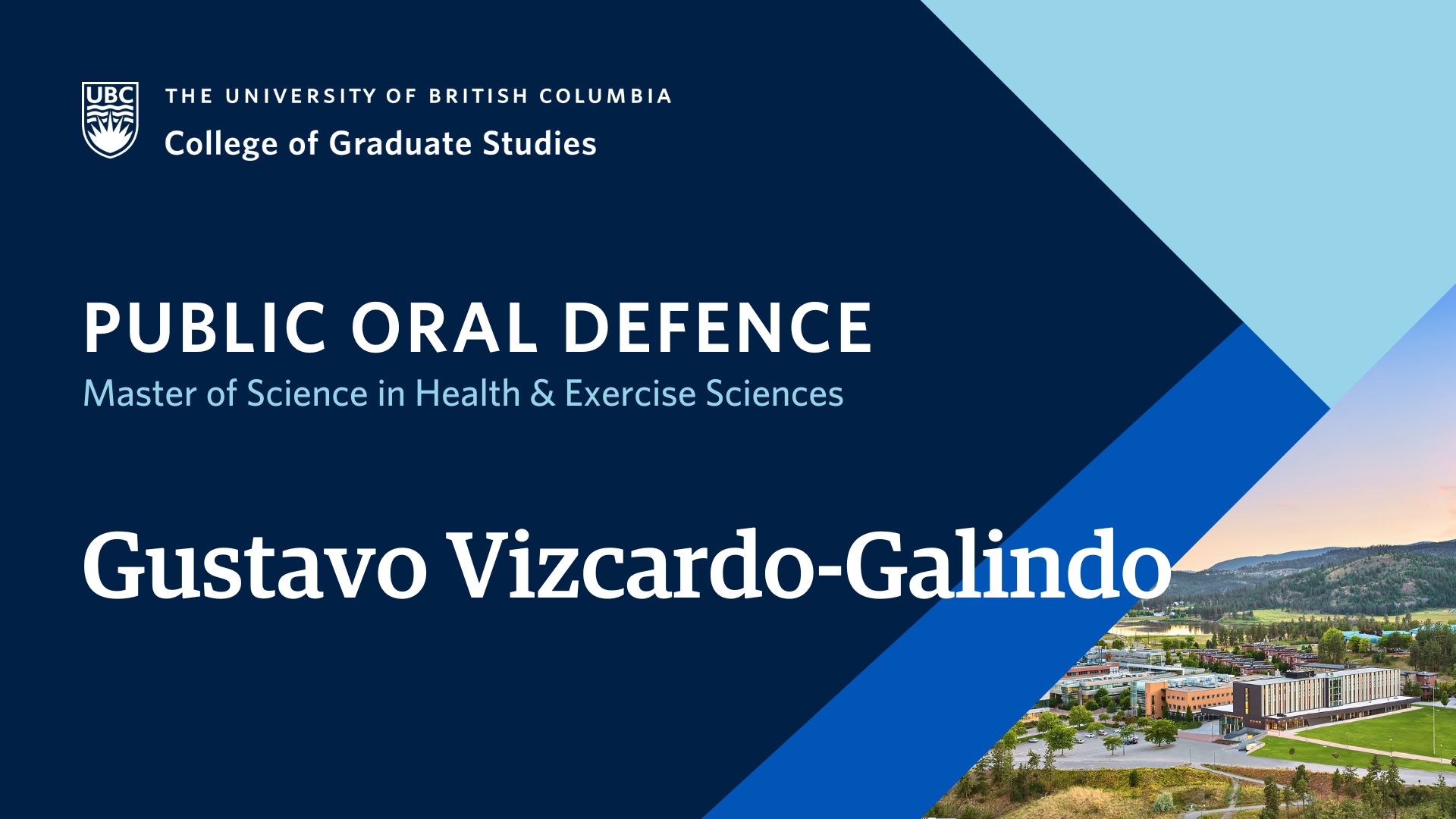
- This event has passed.
Thesis Defence: The effect of oxygen supplementation on brachial artery hemodynamics and vascular function during trekking ascent to high altitude
December 5, 2022 at 1:00 pm - 4:00 pm

Gustavo Vizcardo-Galindo, supervised by Dr. Philip Ainslie, will defend their thesis titled “The effect of oxygen supplementation on brachial artery hemodynamics and vascular function during trekking ascent to high altitude” in partial fulfillment of the requirements for the degree of Master of Science in Health and Exercise Sciences.
An abstract for Gustavo’s thesis is included below.
Defences are open to all members of the campus community as well as the general public.
If you would like to attend this virtual examination please contact the supervisor at philip.ainslie@ubc.ca to receive a zoom link.
ABSTRACT
High-altitude trekking alters upper limb hemodynamics and reduces brachial artery vascular function in lowlanders. However, whether these changes are reversible with the correction of hypoxia is unknown. We investigated the impact of 15 minutes of oxygen supplementation (O2) on brachial artery hemodynamics, reactive hyperemia (microvascular function) and flow-mediated dilation (FMD; endothelial function). Healthy male participants (aged 21-42 years) were examined prior to and with O2 at 3440m (day 4 at high altitude; n=7), 4371m (day 7; n=7), and 5050m (day 10; n=12) using Duplex ultrasound. At 3440m, O2 decreased brachial artery diameter (-5±5%; P=0.04), baseline blood flow (-44±15%; P<0.001), oxygen delivery (-39±16 P<0.001) and peak reactive hyperemia (-8±8%; P=0.02). Although at 3440m O2 elevated FMD (P=0.04), this was attributed to the reduction in baseline diameter (allometrically-scaled FMD, P=0.145). Only antegrade shear stress was reduced by O2 at 4371m (P=0.026). However, at 5050m, a reduction in brachial artery blood flow (-17±22%; P=0.03), but not oxygen delivery, diameter, reactive hyperemia or FMD occurred with O2. Collectively, these findings suggest that O2 causes vasoconstriction in the upper limb along the arterial tree (conduit and resistance arteries), limiting oxygen delivery and reactive hyperemia during early trekking at high altitude. With prolonged, more severe high-altitude exposure, O2 reduces blood flow in the upper limb without compromising oxygen delivery, reactive hyperemia or FMD. Therefore, supplemental oxygen appears to have differential impacts on vascular function that are modulated by the duration and severity of high-altitude exposure.